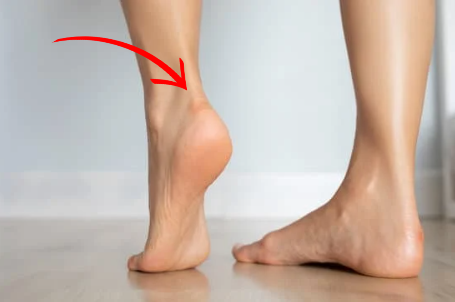Retrocalcaneal bursitis
Retrocalcaneal bursitis is the inflammation of the bursa located between the Achilles tendon and the heel bone (calcaneus). The bursa serves to reduce friction between these structures, allowing smooth movement of the Achilles tendon during ankle motion.
Causes of Retrocalcaneal Bursitis:
- Overuse or Repetitive Stress: Activities that involve repetitive movements of the ankle, such as running or jumping, can irritate the bursa, leading to inflammation.
- Footwear: Wearing shoes that excessively rub or press on the back of the heel can contribute to irritation and inflammation of the retrocalcaneal bursa.
- Abnormal Foot Biomechanics: Structural issues like tight calf muscles, flat feet, or high arches can alter the mechanics of the foot and increase stress on the bursa.
- Trauma or Injury: Direct trauma to the back of the heel, such as a blow or impact, can cause irritation and inflammation of the bursa.
- Underlying Conditions: Certain conditions, such as rheumatoid arthritis, gout, or Haglund’s deformity (an abnormal bony enlargement at the back of the heel), can predispose individuals to retrocalcaneal bursitis.
Symptoms of Retrocalcaneal Bursitis:
- Pain and Tenderness: Pain at the back of the heel, particularly during activities that involve ankle movement or pressure on the area.
- Swelling: Inflammation of the bursa can cause visible swelling at the back of the heel.
- Redness or Warmth: The skin over the affected area may appear red or feel warm to the touch.
- Limited Ankle Mobility: Reduced range of motion in the ankle due to pain and swelling.
Are you suffering from any foot condition? At The Chelsea Clinic, we can help. One of our podiatrist can assist and then recommend what treatments are best to get you back on track. Podiatrist South Kensington
Schedule an appointment here or you may call us at +44 (0) 207 101 4000.
We hope you have a feetastic day!
-The Chelsea Clinic and Team




